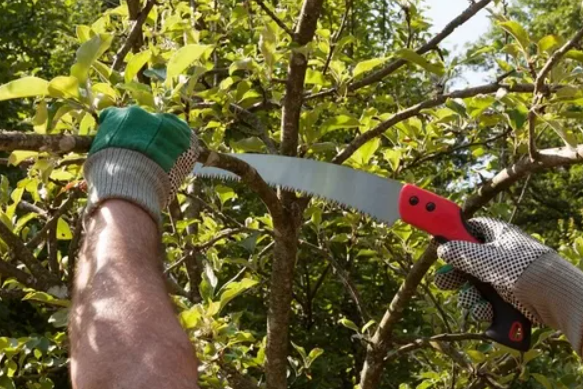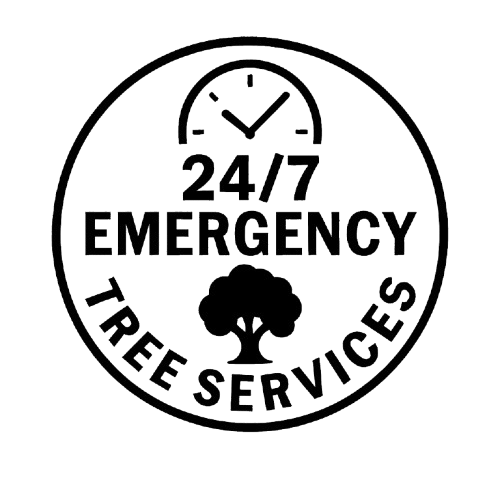Emergency Trimming for Silver Maple Trees

The Silver maple tree, known for its rapid growth and beautiful broad leaves, is a popular choice for homeowners. However, its brittle wood and fast-growing limbs can pose significant safety risks, especially during severe weather conditions. Emergency trimming becomes essential when branches break, die, or pose immediate threats to property or people. Knowing when and how to address these situations ensures the tree’s health and the surroundings’ safety. Understanding the signs that a tree needs emergency attention can help prevent further damage and keep your property secure. Key Takeaways: Timely Emergency Trimming Ensures Safety: Broken or damaged branches from storms or decay can pose a severe risk to people, property, and power lines. Knowing the signs and acting quickly on emergency trimming can prevent accidents and further property damage. Proper Tools and Techniques Matter: Having the right tools and making clean cuts are essential for the health of the Silver maple tree. Using incorrect methods can cause long-term damage to the tree’s structure and growth potential. Regular Maintenance Prevents Emergencies: Routine pruning and care of your Silver maple tree can help avoid the need for emergency trimming. This improves the tree’s health and prevents hazardous situations, particularly during stormy seasons. Signs That Emergency Trimming is Needed Emergency trimming becomes crucial when a Silver maple tree exhibits sure signs that pose immediate risks to people and property. Recognizing these signs helps prevent accidents and keeps the tree healthy in the long run. Here are the key indicators: Broken or Hanging Branches After a Storm: After heavy storms or strong winds, branches can break or become partially detached, creating dangerous hanging limbs. These branches risk falling unexpectedly, which can cause injury or property damage. Inspecting your Silver maple after severe weather and removing any hazardous branches promptly is essential. Dead or Decaying Limbs Posing a Safety Risk: Dead or decaying branches are an eyesore and a significant safety concern. Decay weakens the branch structure, making it more likely to fall, especially under the weight of snow, ice, or high winds. Emergency trimming helps remove these limbs before they become a liability. Overgrown Branches Obstructing Structures or Power Lines: As silver maple trees grow, their branches can extend toward power lines or buildings. Overgrown branches can cause power outages or damage roofs, windows, or other structures if untrimmed. In such cases, emergency trimming is essential to protect your home and maintain public safety. Sudden Pest Infestations Causing Rapid Tree Damage: Pest infestations, such as borers or beetles, can rapidly damage silver maple trees. When branches show visible signs of infestation or decay, they may need to be trimmed to prevent further damage and stop the infestation from spreading. Tree Leaning or Showing Signs of Structural Weakness: A tree leaning or showing signs of structural weakness, such as large cracks or splits in the trunk, may require emergency trimming to reduce weight on vulnerable parts. This can prevent the entire tree from falling, particularly in high-risk weather conditions. Tools and Equipment for Trimming Essential Tools for Safe Emergency Trimming: Pruning saws: For cutting through larger, thick branches. Loppers: These long-handled cutting tools help reach medium-sized branches. Pole saws: Ideal for trimming higher branches without needing a ladder. Chainsaws: Used for quickly cutting through large branches or limbs (best left to professionals for large-scale work). Personal Protective Equipment (PPE): Gloves: To shield your hands from instruments or sharp branches. Safety goggles or glasses: Shield eyes from sawdust and falling debris. Helmets: In case of falling limbs, wearing a helmet can prevent serious head injuries. Use of Ropes and Ladders for High Branches When dealing with high branches, ropes can help control the fall of large limbs, reducing the risk of injury or property damage. Ladders should only be used with caution and proper stabilization. If branches are too high or risky, using a pole saw or hiring a professional is a better option. When to Consider Hiring a Professional Arborist Not all trimming tasks can or should be done by homeowners. If branches are close to power lines or buildings or are too large to handle safely, it’s best to call a professional arborist. They have the experience, tools, and knowledge to manage complex or high-risk jobs efficiently and safely. Step-by-Step Guide for Emergency Trimming When your Silver maple tree shows signs of needing emergency trimming, it’s essential to approach the task safely and effectively. This step-by-step guide ensures the tree is trimmed correctly while minimizing risks. Assess the Situation: Ensure Safety Before Approaching the Tree: The first step in any emergency trimming situation is to evaluate the tree and its surroundings. Ensure no imminent hazards like power lines or heavy branches are at risk of falling. Only proceed if the situation is manageable; call a professional if it seems too risky or complicated. Clear the Area: Make Sure No People or Pets Are in Harm’s Way: Before starting the trimming process, clear the area of any people, pets, or valuable objects. Falling branches can cause injury or damage, so creating a safe, open space around the tree is essential. Trim Broken or Dead Limbs First: Start with the Most Dangerous Branches: Trim the most dangerous branches, such as broken, hanging, or dead limbs. These pose the most immediate risk of falling and should be handled first. Start with the highest-risk limbs and work your way down to ensure people’s and property’s safety. Make Proper Cuts: Trim at the Collar to Avoid Damaging the Tree: When trimming, cut the branch collar, which is the swelling area where the branch joins the trunk. Cutting here helps the tree heal more quickly and reduces the risk of decay or disease. Avoid leaving stubs, which can harm the tree, or cutting too close, which can damage the trunk. Dispose of Debris Properly: Remove Cut Branches and Clean the Area: After trimming, gather and dispose of the cut branches and debris. Leaving the area cluttered can pose tripping hazards and block pathways. You can mulch smaller branches, but




